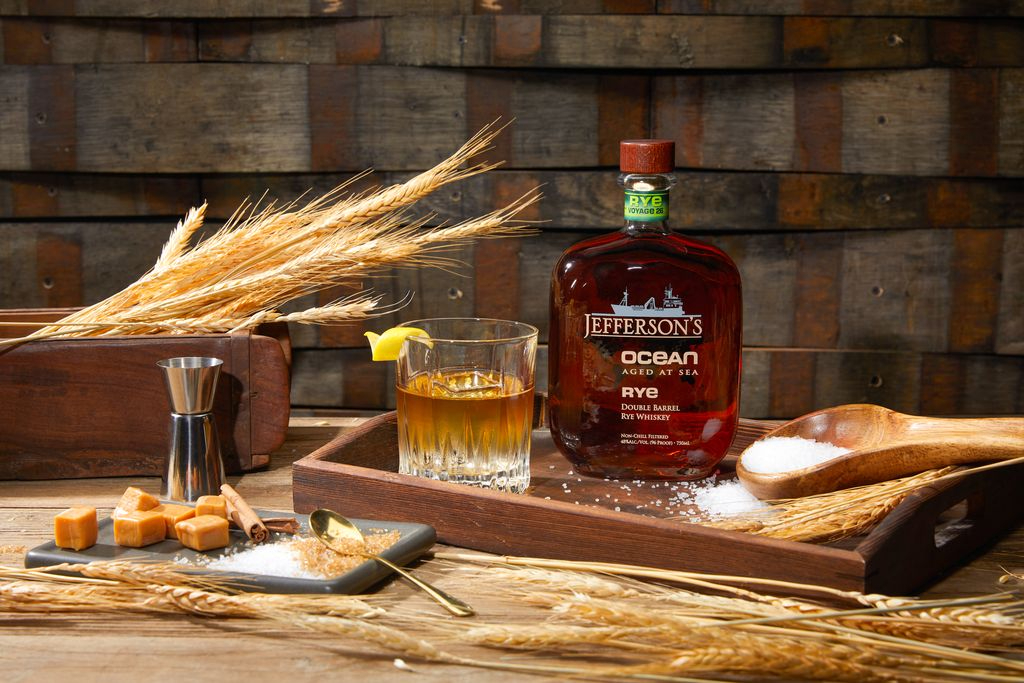
Kentucky and bourbon go way back. The state has made American whiskey famous, and its heritage is impressive. But that does not mean that the industry has carried on from generation to generation.
Between ever-changing consumer palates, an up-and-down economy, and Prohibition, the whiskey scene has endured a lot. Thriving within is a delicate dance involving honoring the old ways while gently tweaking them to properly fit the future.
Trey Zoeller founded Jefferson’s Bourbon in 1997 with his dad, Chet. The latter is a whiskey historian and impressed an appreciation of the spirit of Trey early on. Pride, too, helped fuel and drive the brand, one that relies equally on old-fashioned and intriguing methods of aging its work along with new elements of innovation. It’s a balancing act that, so far, seems to be working pretty well.
The beginning

The preface to the brand involves everything from an outlaw grandmother to a fateful barrel of Irish whisky. “When I started the brand in 1997, there were only eight distilleries left in Kentucky,” Zoeller says. “Bourbon was in a 30-year decline, so our biggest hurdle at the time was finding customers. People looked down their noses at bourbon at that time. Then, when people first started getting into bourbon, they were wary of a bourbon brand that was not doing what their Daddy and his Daddy did. And, of course, capital was an issue for a small but growing brand. We had to put down enough bourbon to keep up with our growth.”
Zoeller says his father played an instrumental role, but there were other factors, too. “I grew up in Kentucky, and just about everyone drinks bourbon, so I did not really think about it as it was always there — until I moved to a half dozen different places around the country where no one was drinking bourbon. I was an obnoxious pied piper of bourbon and had a lot of Kentucky pride that I wanted to introduce other people to.”
Meanwhile, his dad sent for a barrel. “Around the same time, my Dad and a few of his friends pitched in and bought a single barrel of Bushmills Irish whisky,” he says. “I thought, if he can buy a barrel from Ireland, why can’t we buy barrels of bourbon from our friends in Kentucky? Around the same time, we discovered arrest records of my 8th-generation grandmother for moonshining, which really got me excited about the bourbon industry.”
Aging at sea

The story goes that Zoeller was on a pal’s boat in Costa Rica sipping bourbon. “I saw the bourbon rocking back and forth in the bottle and thought if this happened in a bottle, it would happen in a barrel,” he says. “I was also familiar with how whiskey used to be transported from Kentucky to the East Coast and how it developed so much depth, character, and flavor.”
The idea was born. “I sent five barrels of new-fill bourbon out on the ship for three-and-a-half years,” he says. “When we finally tapped into the barrels, the whiskey was black, thick, and delicious. We then looked at how we could commercialize this kind of method of maturing bourbon.”
Now, the approach is a big part of the brand. “Today, we take mature bourbon from Kentucky, put the barrels into containers, and ship them to Savannah, Georgia,” he says. “Here, they go on the very top of the ship’s bow–ensuring as much pitch as possible–and send the barrels to around 30 ports on five continents, crossing the equator multiple times. The barrels go all the way down to the Tasmanian Sea and up to the North Sea, giving huge weather swings.”
Why go with the trouble of sending your liquid all over the world by boat? “The bourbon is continuously sloshing in the barrels, the extreme heat caramelizes the sugars in the wood, and the sea air permeates the barrels with salt; this results in a rich, salted, caramel flavor that is absolutely delicious,” claims Zoeller.
The horizon

Being able to maintain things while honoring the environment has perhaps never been more crucial. “Sustainability is important to not only the spirits world but to Jefferson’s Bourbon in particular,” Zoeller says. A new state-of-the-art distillery is set to open this fall. “The distillery is expected to be the first of its size in the U.S. to achieve LEED certification,” he says. In addition, Zoeller says the distillery and warehouses will use electrode boilers powered by certified renewable electricity and electric trucks and facility vehicles. The property will also feature extensive solar and natural lighting.
With the new headquarters underway, the horizon is looking bright. But staying ahead in the bourbon circuit is a sleepless task. “Experimentation, experimentation, and experimentation,” says Zoeller, about staying relevant. “Finding new flavors and new unique ways to age bourbon is what it’s all about! Another way we would like to keep this generation interested is by having fun with exciting partnerships, sweepstakes, and contests with influential names.”
Staying alive in an American bourbon scene that touts some 740 producers involves a certain perspective. “We are always looking ahead,” Zoeller says. “We started blending bourbons 26 years ago and started experimenting 20 years ago with different types of maturation, finishing, and climates. While always tipping our hat to traditions, we want to push the boundaries of what bourbon can be.”
Stay on top of all things whiskey. Check out our whiskey terminology guide and our favorite whiskies of 2024. You can also learn about the emerging new category, otherwise known as American Single Malt. Cheers!


